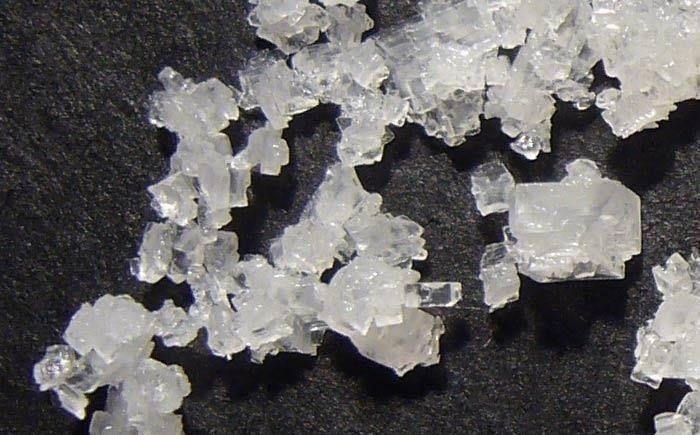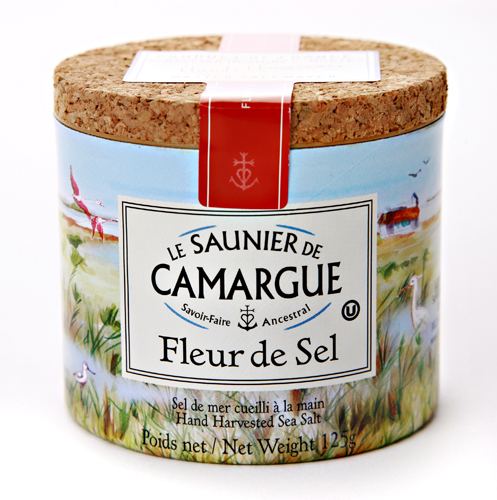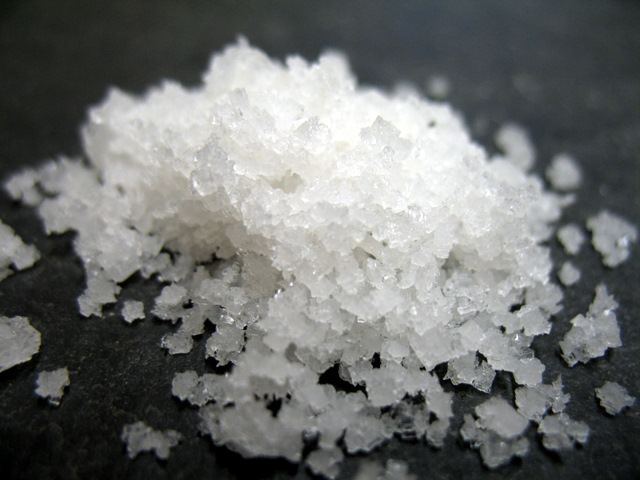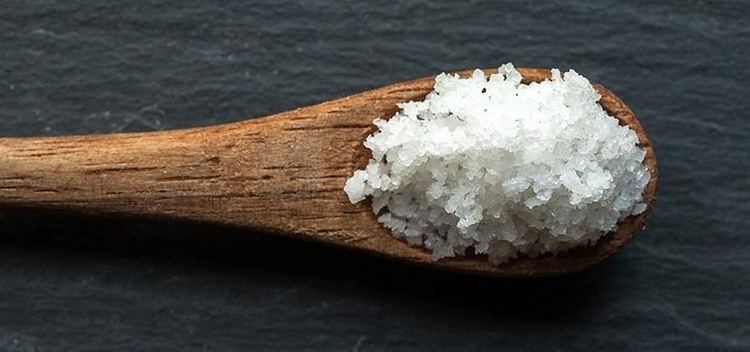 | ||
What is the difference between fleur de sel and sea salt
Fleur de sel ("flower of salt" in French; [flœʁ də sɛl]) or flor de sal (also "flower of salt" in Portuguese, Spanish and Catalan) is a salt that forms as a thin, delicate crust on the surface of seawater as it evaporates. Fleur de sel has been collected since ancient times (it was mentioned by Pliny the Elder in his book Natural History), although it was traditionally used as a purgative and salve. It is now used as a finishing salt to flavor and garnish food. The name comes from the flower-like patterns of crystals in the salt crust.
Contents
- What is the difference between fleur de sel and sea salt
- Fleur de sel
- Harvesting
- Uses
- Mineral Composition
- References

Fleur de sel
Harvesting

One method of gathering sea salt is to draw seawater into marsh basins or salt pans and allow the water to evaporate, leaving behind the salt that was dissolved in it. As the water evaporates, most of the salt precipitates out on the bottom of the marsh or pan (and is later collected as ordinary sea salt), but some salt crystals float on the surface of the water, forming a delicate crust of intricate pyramidal crystals. This is fleur de sel. The delicacy requires that it be harvested by hand, so this is done with traditional methods using traditional tools. In France, the workers who collect fleur de sel are called paludiers, and they employ a wooden rake called a lousse à fleur to gently rake it from the water. In Portugal, a butterfly-shaped sieve called a borboleta is used instead. It is then put in special boxes so that it will dry in the sun, and to avoid disturbing the flakes as it is transported for packaging. Historically, the workers who harvested fleur de sel were women, because it was believed that as the salt crystals were so delicate, they needed to be collected by "the more delicate sex." Because it is scraped from the salt marsh like cream from milk, fleur de sel has been called "the cream of the salt pans." It is also called "the caviar of sea salts."

Fleur de sel can only be collected when it is very sunny, dry, and with slow, steady winds. Because of the nature of its formation, fleur de sel is produced in small quantities. At Guérande, France, each salt marsh produces only about one kilo (2.2 pounds) per day. Because of this and the labor-intensive way in which it is harvested, fleur de sel is the most expensive of salts.

This method of salt formation and collection results in salt crystals that are not uniform. The salt also has a much higher amount of moisture than common salt (up to 10% compare to 0.5% for common salt), allowing the crystals to stick together in snowflake-like forms. The moisture means that fleur de sel won't dissolve right away on your tongue, so the taste lingers. Also, since it is unrefined, it is not just sodium chloride. Other minerals, like calcium, and magnesium chloride, give it a more complex flavor. These chemicals make fleur de sel taste even saltier than salt, and give it what has been described as the flavor of the sea. Trace mineral content depends upon the location at which it is harvested, so the flavor varies with point of origin.

Fleur de sel is rarely the pure white of table salt. It is often pale gray or off-white from clay from the salt marsh beds. Sometimes it has a faintly pink tinge from the presence of Dunaliella salina, a type of pink microalga commonly found in salt marshes. However fleur de sel from Camargue in France and Ria Formosa in Portugal is white.
Uses

Only about 5% of salt is used for cooking, but fleur de sel is only used to flavor food. It is not, however, used in place of salt during the cooking process. Instead, it is added just before serving, like a garnish, a "finishing salt," to boost the flavor of eggs, fish, meat, vegetables, chocolate, and caramel.
Mineral Composition
Because it is harvested naturally from the sea and is usually not refined, fleur de sel has more mineral complexity than common table salt. The following is a chemical analysis of Flos Salis, a flor de sal by Portuguese company Marisol:
